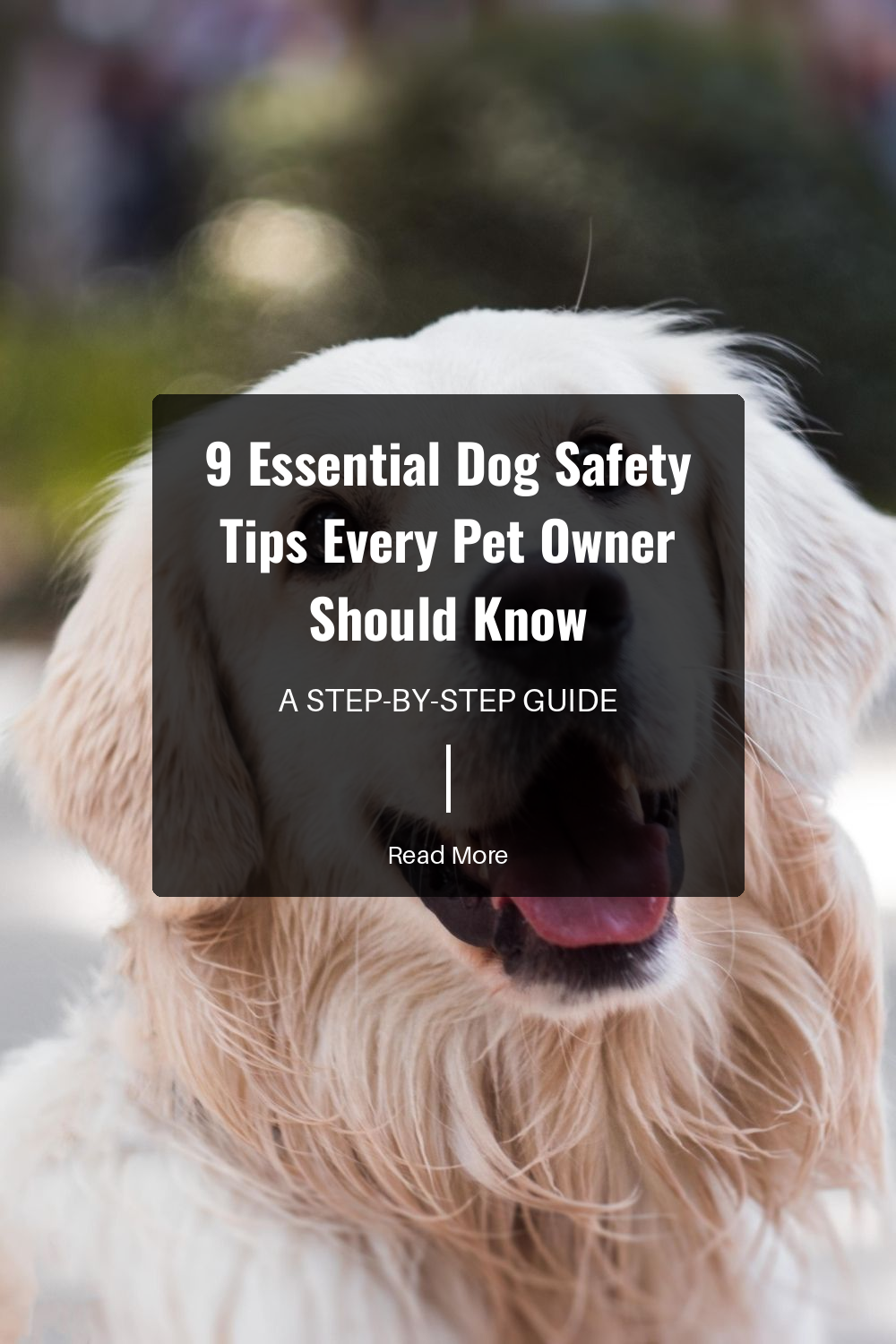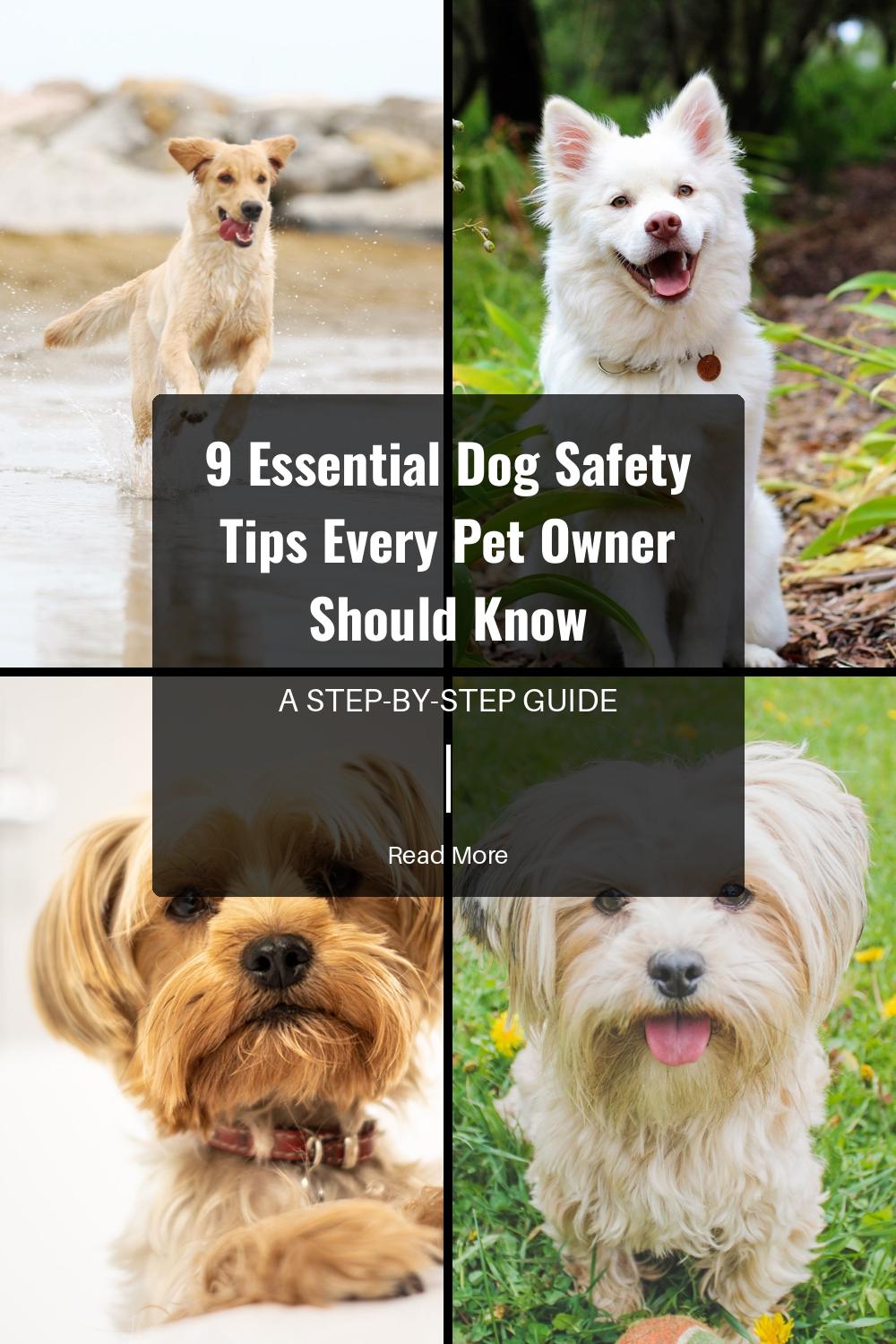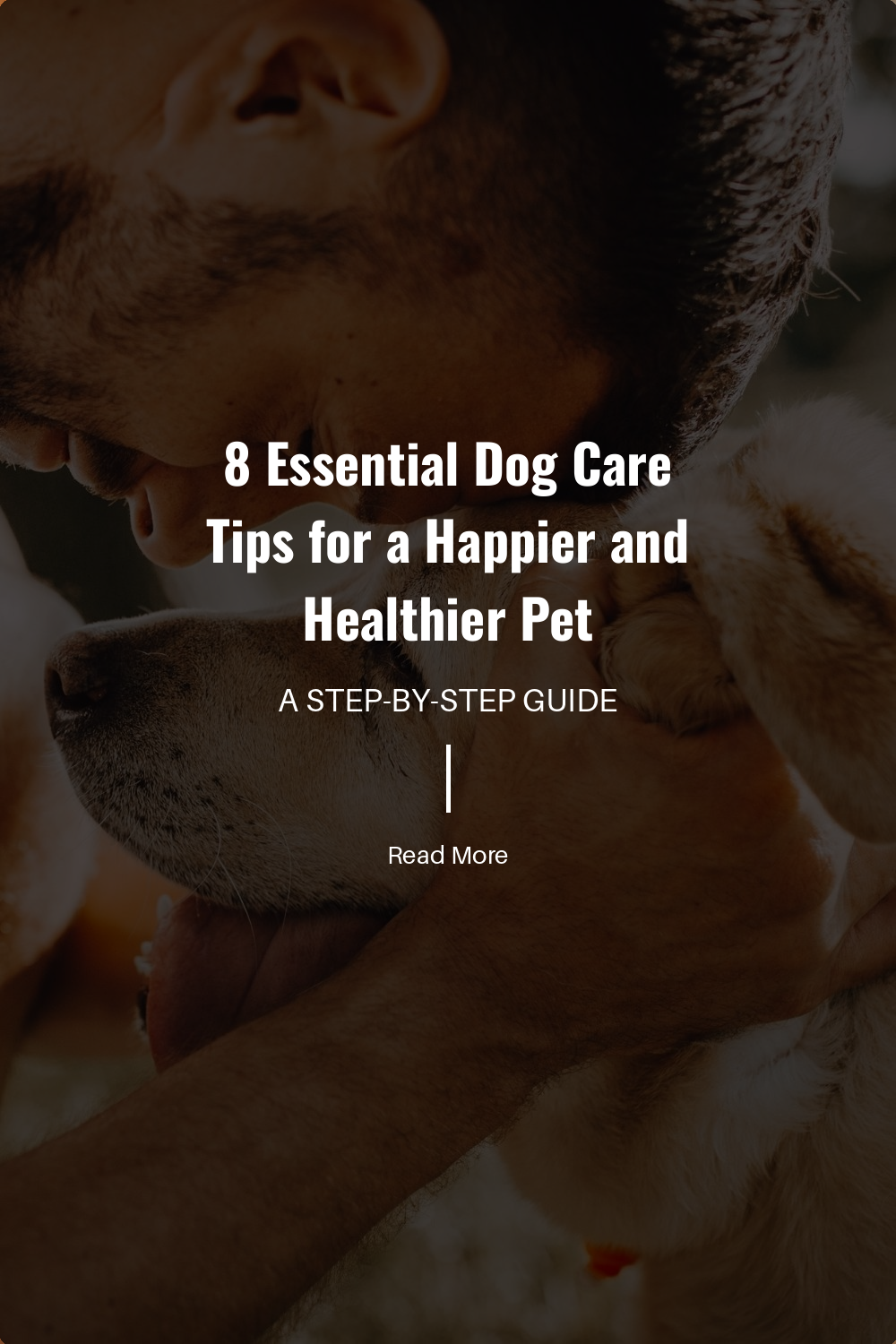In this article, “9 Essential Dog Safety Tips Every Pet Owner Should Know,” we aim to provide crucial dog safety tips that every pet owner must consider. Our furry friends rely on us to keep them safe and healthy. Implementing these dog safety tips enhances your pet’s well-being and prevents potential mishaps.
From the first moments of bringing a dog home to daily outings, these dog safety tips offer easy, practical advice. You’ll discover how to create a safe environment, what items to keep out of reach, and essential health checks. These tips address everything from ensuring secure fencing to avoiding harmful foods.
Understanding and embracing these dog safety tips can make a difference in your pet’s life. As a responsible pet owner, being informed helps you prevent accidents and create a nurturing space for your dog. Invest a few minutes to equip yourself with knowledge that could save your pet from harm. Let’s dive into these essential tips and ensure that your beloved dog stays safe and sound.
Secure Fencing

Creating a safe environment for your dog starts with ensuring that your backyard has secure fencing. A well-constructed fence acts as a barrier that prevents your dog from wandering off and encountering potential hazards like busy roads or wild animals. It’s essential to choose a fence that is high enough and sturdy enough to keep your energetic friend safe inside.
Regularly check your fence for gaps, weak spots, or any areas where your dog might escape. Even small openings can lead to big risks. Dogs are naturally curious, and they may find a way to slip through if a fence isn’t secure. Consider using a fencing product designed specifically for pets if you have an existing fence that needs reinforcement.
Additionally, make sure the gate is always locked and secure. A loose latch can be an open invitation for your furry friend to venture outside unsupervised. It’s also a good idea to supervise your dog while they play in the yard. Keeping an eye on their activities can help prevent any mishaps.
Remember, part of good dog safety tips includes making sure your dog can enjoy the outdoors without putting themselves in harm’s way. If your dog spends time in grassy areas, consider using a dog flea and tick treatment to protect them from pests that may lurk outside. Ensuring your backyard is completely secure lets your dog enjoy their playful nature while keeping them safe and sound.
Keep Hazardous Items Out of Reach

As a responsible pet owner, it’s crucial to ensure the safety of your dog at home. One way to do this is by properly storing hazardous items. Many common household items can pose serious risks if ingested or handled by your furry friend.
Start by keeping all chemicals, including cleaning supplies and pesticides, in a high cabinet or locked area. These substances can be poisonous and even fatal to dogs. For example, products like bleach or ammonia can cause severe health issues if ingested. Always read labels and store products safely out of your dog’s reach.
Medicines are another major concern. Many pet owners may unknowingly leave their medications out, thinking they are secure. However, it’s essential to keep all medicines in a secure, high cabinet or a locked drawer. Pain relievers, antidepression pills, and some vitamins can be toxic to dogs. If your dog ever gets into your medication, contact your veterinarian immediately.
Don’t forget about sharp objects too. Items like scissors, knives, or even sewing needles can cause injury. Always store these away in a secured place where your dog cannot access them. Keeping these items out of reach is not just a precaution; it’s one of the top dog safety tips you can follow.
Lastly, consider using a dog flea comb to check for any unwanted pests after outdoor activities, and remember to use dog flea and tick treatment to keep your dog protected from parasites. Keeping your home safe can go a long way in ensuring your dog’s health and happiness.
Proper Identification

To ensure the safety of your furry friend, proper identification is crucial. A reliable way to identify your dog is by using a collar with an ID tag. The ID tag should include your dog’s name, your contact number, and any other relevant information. This simple step can make a big difference and significantly increases the chances of recovering your dog if they happen to get lost.
Microchipping: A Smart Choice
While collars and ID tags are effective, they can sometimes be removed or lost. That’s where microchipping comes in. A microchip is a small device that gets implanted under your dog’s skin. It contains a unique identification number that is linked to your contact information in a database. If someone finds your dog, they can take them to a vet or animal shelter where the chip can be scanned, revealing your contact details.
Benefits of Proper Identification
- Increased Chances of Recovery: Both collars and microchipping work together to increase the likelihood of finding your lost dog.
- Peace of Mind: Knowing that your dog has proper identification helps you relax when they are outside.
- Quick Help in Emergencies: If your dog has any medical conditions, mention it on their ID tag, allowing others to help in case of an emergency.
Incorporating these identification tips into your pet care routine is one of the essential dog safety tips every owner should follow. Remember, while playing and enjoying time outdoors, dogs can easily wander off. Make sure they’re prepared to find their way back home safely.
Regular Health Checks

Regular veterinary visits are crucial for ensuring your dog’s health and safety. By scheduling check-ups at least once a year, you can catch potential issues early. This proactive approach helps maintain your pet’s overall well-being and provides peace of mind for you as a responsible pet owner.
During these appointments, your vet will perform a thorough examination of your dog. They will check vital signs, assess weight, examine the eyes, ears, and mouth, and look for any signs of illness. Regular health checks can also include vaccinations, which can protect your dog from several serious diseases.
Importance of Preventive Care
Preventive care is key to dog safety. Your veterinarian can offer guidance on flea and tick treatments, which play an essential role in preventing infestations and related illnesses. For this purpose, using a quality dog flea and tick treatment can provide effective protection. Regular grooming, including using a dog flea comb, is also important in maintaining your dog’s skin and coat health. These practices not only keep your pet comfortable but also enhance their safety by reducing the risk of serious health problems.
Remember, a healthy dog is a happy dog. Regular vet visits ensure that you stay informed and can provide the best care for your furry friend. Don’t wait for signs of illness; proactive care is part of responsible dog ownership.
Safe Car Travel

When traveling with your dog, safety is key. One of the best dog safety tips is to secure your furry friend in the car. This can be achieved using either a pet seatbelt or a crate. Both options keep your dog safe during the ride and reduce distractions for the driver.
Pet Seatbelts
Using a pet seatbelt is a great way to ensure your dog stays secure in the car. It clips into the seatbelt and attaches to a harness worn by your dog. This method allows your dog to sit comfortably while keeping them restrained and safe. When choosing a seatbelt, make sure it is designed specifically for dogs and approved for safety.
Crates
Another effective way to transport your dog is by using a travel crate. A sturdy crate not only keeps your dog secure but also provides a familiar space for them. Make sure the crate is well-ventilated and large enough for your dog to stand, turn around, and lie down comfortably. Securing the crate properly in your vehicle is also essential to avoid any sliding during sudden stops.
Additional Tips
- Always buckle your dog up before you start driving.
- Never allow your dog to stick their head out the window; this can lead to serious injuries.
- If your dog experiences motion sickness, consult your vet for advice that may include treatments like a dog flea and tick treatment, which can calm them during long trips.
By following these precautions, you can ensure safe travels with your dog. Keeping them secure in the car is one of the simplest yet most effective dog safety tips for all pet owners.
Avoid Harmful Foods

As a pet owner, it’s crucial to keep your furry friend safe from harmful foods that can lead to serious health issues. Some everyday items in your kitchen may be toxic to dogs, so being aware of these dangers is a vital part of dog safety tips.
Common Toxic Foods for Dogs
-
Chocolate: Most dog owners know chocolate is bad for dogs. It contains theobromine, which dogs can’t metabolize effectively. Even small amounts can cause vomiting, diarrhea, and in severe cases, seizures or death.
-
Grapes and Raisins: Surprisingly, grapes and raisins can cause kidney failure in dogs. Even a small amount can lead to serious health problems, so it’s best to keep these snacks away from your pet.
-
Onions and Garlic: Onions and garlic can damage a dog’s red blood cells, leading to anemia. Even cooked forms should be avoided.
-
Avocado: While healthy for humans, avocados contain persin, which can cause vomiting and diarrhea in dogs.
-
Nuts: Certain nuts like macadamia nuts are poisonous to dogs. They can lead to weakness, depression, and even tremors or hyperthermia.
-
Xylitol: This artificial sweetener, found in many sugar-free products, can quickly cause insulin release in dogs, leading to hypoglycemia.
Tips for Safe Eating
- Educate Family Members: Make sure everyone in your household knows which foods are unsafe for dogs. This helps prevent accidental poisoning.
- Keep Foods Out of Reach: Store harmful foods in cabinets or on high shelves so your dog can’t access them. Consider using dog-proof containers for pantry items.
Ultimately, keeping your dog safe from harmful foods not only protects their health but also gives you peace of mind as a pet owner. Stay informed and share these dog safety tips with others to help ensure a safe environment for all pets.
Seasonal Safety

As seasons change, so do the hazards your dog might face. It’s important to be aware of these risks to ensure their safety.
Summer Hazards
During the hot summer months, overheating can be a serious concern for dogs. Dogs do not sweat like humans; instead, they cool down through panting. Provide plenty of cool water and shade when they are outside. Limit their exercise during the hottest parts of the day. Watch for signs of heatstroke, such as excessive panting, drooling, or lethargy. If you notice these symptoms, move your dog to a cool place and try to lower their body temperature.
Winter Hazards
Winter brings its own set of dangers for your furry friend. One of the biggest risks is antifreeze, which can leak from cars and has a sweet taste that attracts dogs. Ensure that any spills are cleaned up immediately. When taking your dog outside, keep them warm with a dog coat or sweater, especially small or short-haired breeds. Cold weather can lead to frostbite, so avoid long walks in freezing temperatures.
Keep Safety in Mind
By being mindful of these seasonal hazards, you can protect your dog and keep them safe all year round. Always have a pet first-aid kit on hand, and consider using a dog flea comb to check for pests more easily after outside excursions. Remember, proactive measures can make all the difference in ensuring your pet’s health and safety.
Pet-Proof Your Home

Creating a safe environment for your dog is crucial to ensure their well-being. Start by securing loose wires and cords around your home. Dogs are naturally curious and may chew on these, which can lead to electric shock or injury. Use cord organizers or tape to bundle wires together and keep them out of reach.
Another way to enhance dog safety is by using baby gates. These gates help restrict your dog’s access to certain areas of your home, like staircases or rooms with fragile items. By doing this, you can prevent accidents and keep your furry friend safe from getting into places where they shouldn’t be.
It’s also important to eliminate small items around your home that your dog might swallow. These can include coins, buttons, or small toys. Regularly check your floors and surfaces for such objects. Keep in mind that ingested items can cause choking or blockages, which can be dangerous.
Lastly, don’t forget to invest in products that promote your dog’s safety. For instance, if your dog spends time outdoors, make sure to use effective dog flea and tick treatment to prevent infestations. A dog flea comb can also help you check for any unwanted pests after walks or playtime in the park.
By taking these steps, you can create a safe and welcoming home for your four-legged family member. Ensuring a secure environment is one of the best dog safety tips every pet owner should follow.
Training and Socialization

Training your dog properly is crucial for their safety and the safety of others. A well-trained dog is less likely to exhibit aggressive behavior, which can prevent accidents and injuries. By teaching your dog commands like “sit,” “stay,” and “come,” you give them the tools to respond appropriately in various situations.
Basic Commands
Start with basic commands that encourage good behavior. Here are a few important ones:
- Sit: This command can control your dog’s excitement and helps when meeting new people or animals.
- Stay: Teaching your dog to stay in place is crucial for keeping them safe in busy areas.
- Come: This command helps ensure your dog returns to you when called, especially in unpredictable situations.
Socialization
Socialization is just as important as training. Expose your dog to different people, environments, and other animals. This helps them become comfortable and less fearful. Socialized dogs are more confident and tend to be calmer around strangers and other pets.
You can take your dog to parks or dog-friendly events. Make sure to keep an eye on their interactions. If you notice any signs of discomfort, it’s okay to step back and allow your dog space. If your dog appears to have fleas or ticks during play, consider using a reliable flea treatment to keep both your pet and others safe. You can find a good option here.
A well-mannered and socialized dog leads to a safer environment for everyone involved. Remember, dog safety tips don’t just help your pet; they also ensure a stress-free experience for yourself and those around you.
Bottomline
In conclusion, following these dog safety tips can significantly enhance your furry friend’s life. From secure fencing to proper identification, each suggestion is vital in creating a safe environment for your dog. Remember to keep harmful items out of reach and ensure regular health checks to catch any issues early.
Implementing these dog safety tips not only safeguards your pet but also gives you peace of mind. As responsible pet owners, our goal should be to protect our dogs in every possible way. Use the knowledge from this article to ensure your dog stays happy and safe. Don’t forget, a well-informed owner is the best defense your pet has!





